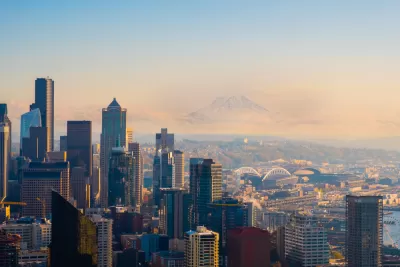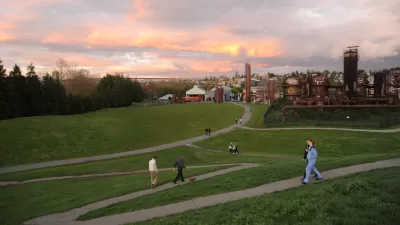An executive order signed last week consolidates actions the city plans to take to reduce greenhouse gas emissions.

As part of an executive order signed last Wednesday, Seattle Mayor Bruce Harrell has directed the city to create three “low-pollution neighborhoods” in the next five years as part of the city’s commitment to reduce carbon emissions.
The executive order, according to The Urbanist’s Ryan Packer, includes “overly broad” language that “leaves the door open to multiple strategies, with several options on the table likely presenting bigger political battles than others.”
The options range from the superblock strategy, which limits the types of vehicles that can access certain areas and reduces traffic on smaller streets, to further investment in bus-only lanes and a commitment to create safe and accessible bike facilities near every school. “In an interview following Harrell’s announcement, Jessyn Farrell said that the city would be focusing on strategies that have been proven to work for shifting commute trips — transit, parking pricing — to non-commute trips, with an intentional focus on school-related trips.”
Packer criticizes the executive order for its vagueness, writing that “Long-range plans and vague commitments have abounded, but a clear vision and action in the here and now has been lacking.” According to Packer, the city has not made significant progress toward meeting its 2013 Climate Action Plan goals.
FULL STORY: Harrell Pledges Three “Low-Pollution Neighborhoods” by 2028

Planetizen Federal Action Tracker
A weekly monitor of how Trump’s orders and actions are impacting planners and planning in America.

Maui's Vacation Rental Debate Turns Ugly
Verbal attacks, misinformation campaigns and fistfights plague a high-stakes debate to convert thousands of vacation rentals into long-term housing.

Cuomo Is the Candidate of Both NIMBYs and Developers. What Gives?
In the New York City mayoral race, odd bedfellows align to preserve the housing status quo.

The Subversive Car-Free Guide to Trump's Great American Road Trip
Car-free ways to access Chicagoland’s best tourist attractions.

San Antonio and Austin are Fusing Into one Massive Megaregion
The region spanning the two central Texas cities is growing fast, posing challenges for local infrastructure and water supplies.

Charlottesville Temporarily Has No Zoning Code
A judge ordered the Virginia city to throw out its newly revised zoning code, leaving permitting for new development in legal limbo.
Urban Design for Planners 1: Software Tools
This six-course series explores essential urban design concepts using open source software and equips planners with the tools they need to participate fully in the urban design process.
Planning for Universal Design
Learn the tools for implementing Universal Design in planning regulations.
Heyer Gruel & Associates PA
JM Goldson LLC
Custer County Colorado
City of Camden Redevelopment Agency
City of Astoria
Transportation Research & Education Center (TREC) at Portland State University
Jefferson Parish Government
Camden Redevelopment Agency
City of Claremont





























